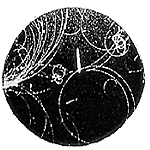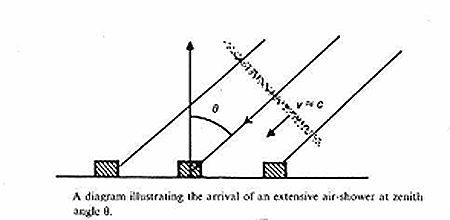
 |
An example of trails formed in a cloud chamber. Different particles, such as muons and beta particles, curl around different amounts, and so can be distinguished from each other. (The trails curl because the different charges on the particles interact with the Earth's magnetic field.) |

